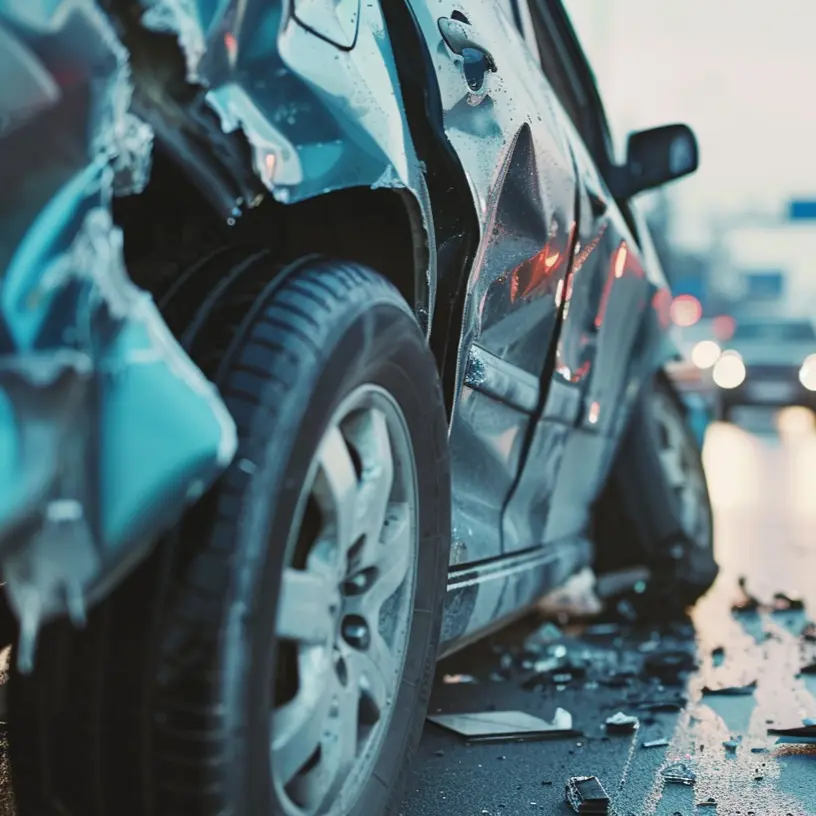If you or a loved one has been injured in a T-Bone accident in Illinois, we can help. Contact Schreier & Ritchie LLC Today.
A T-bone accident, also known as a side-impact collision, occurs when the front of one vehicle crashes into the side of another, forming a “T” shape. These accidents are among the most dangerous types of crashes, often leading to life-altering injuries or fatalities. Understanding how these accidents happen, who is at fault, and what legal options you have can significantly protect your rights.
What is a T-Bone Accident?
A T-bone accident, also known as a side-impact collision, occurs when the front of one vehicle crashes into the side of another, forming a “T” shape. These accidents are hazardous because the sides of a car provide far less protection than the front and rear, which have crumple zones designed to absorb impact energy.
Why Are T-Bone Accidents So Dangerous?
Unlike rear-end or frontal collisions, T-Bone crashes leave drivers and passengers vulnerable to direct impact, as there is typically only a door separating them from the oncoming vehicle. The force of impact can cause severe injuries, such as:
- Head and Brain Injuries: The sudden jolt can cause concussions or traumatic brain injuries (TBI).
- Neck and Spinal Cord Damage: Depending on the severity of the crash, whiplash and even paralysis can occur.
- Broken Bones and Fractures: Rib, pelvis, and leg fractures are common due to the force applied to the side of the body.
- Internal Bleeding and Organ Damage: Blunt-force trauma can damage vital organs, sometimes leading to life-threatening conditions.
- Fatalities: Due to the intensity of these accidents, fatal injuries are unfortunately not uncommon.
Common Causes of T-Bone Accidents
Several factors contribute to side-impact crashes, many of which involve driver negligence. The most common causes include:
Failure to Yield the Right of Way
One of the most frequent causes of T-Bone accidents is when a driver fails to yield at intersections. Illinois law requires drivers to yield when traffic signals indicate or when another vehicle has the right of way (Illinois Vehicle Code, 625 ILCS 5/11-902).
Running Red Lights or Stop Signs
Drivers who ignore traffic signals and enter an intersection at high speeds put themselves and others at significant risk. The National Highway Traffic Safety Administration (NHTSA) states that red-light running accounts for nearly 30% of intersection crashes (NHTSA).

Distracted Driving
Using a phone, adjusting the radio, or even talking to passengers can cause a driver to miss stop signs or signals, leading to serious T-Bone crashes (CDC Distracted Driving).
Speeding Through Intersections
A vehicle traveling at high speeds through an intersection has less time to react, making side-impact collisions more forceful and destructive (Illinois Speeding Laws, 625 ILCS 5/11-601).
Drunk or Impaired Driving
Alcohol and drugs significantly reduce reaction time and judgment, making impaired drivers more likely to cause T-Bone crashes (Illinois DUI Laws, 625 ILCS 5/11-501).
Who is at Fault in a T-Bone Accident?
Determining fault in a T-bone accident can be complicated. The driver who fails to obey traffic laws or violates another driver’s right of way is usually held responsible. However, multiple factors—such as malfunctioning traffic signals or poor road conditions—may also play a role in some cases.
How Fault is Determined:
- Traffic Camera Footage – If available, video evidence can prove who had the right of way.
- Eyewitness Statements – Independent witnesses can provide unbiased accounts of the crash.
- Police Reports – Law enforcement officers document accident details and may assign blame.
- Accident Reconstruction Experts – Professionals analyze the crash to determine contributing factors.
Steps to Take After a T-Bone Accident
If you are involved in a side-impact crash, taking the right steps can help protect your legal rights and strengthen your injury claim.
- Call 911 Immediately – Always report the accident, even if injuries seem minor.
- Seek Medical Attention – Some injuries, like internal bleeding, may not be immediately apparent.
- Gather Evidence – Take photos of the scene, vehicle damage, and visible injuries.
- Get Witness Information – Collect their contact details if anyone saw the crash.
- Do Not Admit Fault – Avoid discussing who was responsible; let the investigation determine this.
- Consult a Lawyer – An experienced car accident attorney can help you navigate insurance claims and legal proceedings.
Compensation for T-Bone Accident Injuries
Victims of T-Bone accidents may be entitled to compensation for:
- Medical Bills – Covers hospital stays, surgeries, and physical therapy.
- Lost Wages – If you are unable to work due to your injuries.
- Pain and Suffering – For physical and emotional trauma.
- Property Damage – Repair or replacement of your vehicle.
- Wrongful Death – If a loved one lost their life due to another driver’s negligence.
Illinois follows a comparative negligence system, meaning your compensation may be reduced if you are found partially at fault (735 ILCS 5/2-1116).
Preventing T-Bone Accidents
While you can’t control other drivers, following these safety tips can reduce your risk of a T-Bone crash:
- Always check both ways before crossing an intersection, even on a green light.
- Slow down and be extra cautious in high-traffic areas.
- Never assume another driver will stop at a red light or stop sign.
- Avoid distractions and stay focused on the road.
- Drive defensively and be prepared to react quickly.

